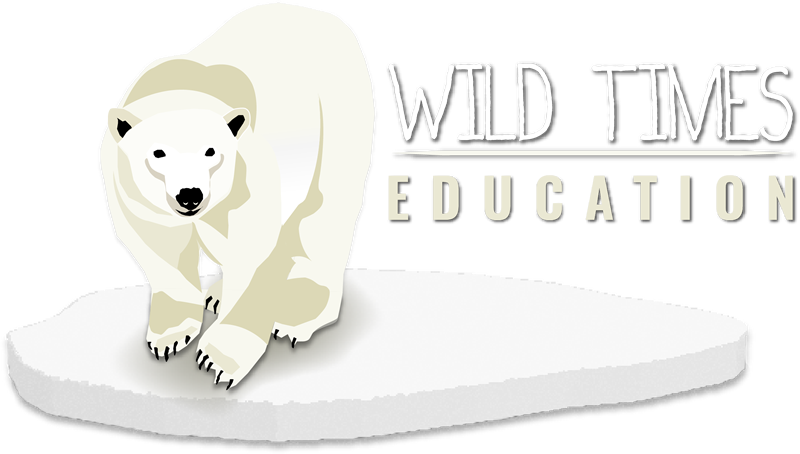Polar Bears & the Arctic
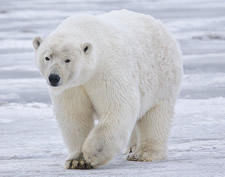 During this presentation participants will learn the basics about polar bears: size, gender differences, life span, physical traits, habitat, food sources, family and social structure, behavior, and special adaptations. Participants will watch a 15 – 20 minute slide show (courtesy of Polar Bears International) that will show beautiful photos that demonstrate the life of a polar bear.
During this presentation participants will learn the basics about polar bears: size, gender differences, life span, physical traits, habitat, food sources, family and social structure, behavior, and special adaptations. Participants will watch a 15 – 20 minute slide show (courtesy of Polar Bears International) that will show beautiful photos that demonstrate the life of a polar bear.
Participants will get to examine a full sized polar bear pelt (courtesy of Audubon Zoo) and touch a replica of a polar bear claw and get to compare the claws of a grizzly bear and black bear. They will learn the key differences between polar bears and other bear species.
Participants will also learn about life on the tundra. If requested participants can take part in a “Chewing the Fat” demonstration where they will get to learn about the thermal properties of fat. They will learn about the other animals that live in the Arctic and how they interact with polar bears. Participants will learn about the town of Churchill, Manitoba on southern Hudson Bay where the bears migrate to prior to the formation of sea ice. Finally participants will learn ways in which they can help polar bears from right here at home. I will also provide participants with further reading and film recommendations.
Amazing Elephants
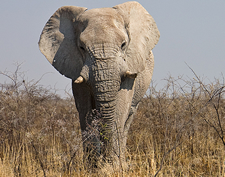 During this presentation participants will learn the basics about elephants: size, gender differences, life span, physical traits, habitat, food sources, family and social structure, behavior, and special adaptations. They will learn the difference between forest elephants and plains elephants.
During this presentation participants will learn the basics about elephants: size, gender differences, life span, physical traits, habitat, food sources, family and social structure, behavior, and special adaptations. They will learn the difference between forest elephants and plains elephants.
Participants will learn about life on the savanna and the threats of poaching practices. They will learn about elephants in the wild and their interactions with humans. Participants will also learn about trained elephants and all the different kinds of work they do. Finally participants will learn about threats to elephants: habitat loss, civil war, overpopulation, etc. and ways children and adults can help the wild elephants.
During the presentation, a slide show will show beautiful photos of elephants. Participants will also be able to examine an elephant tusk as well as molar and other biofacts courtesy of Audubon Zoo. I will also provide participants with further reading and film recommendations.
Reptiles vs. Mammals
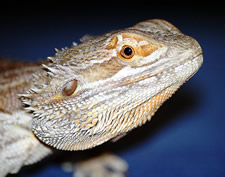 This is a live animal presentation, which is always fun. I bring in a bearded dragon and a dwarf rabbit to teach children about the differences between reptiles and mammals. We’ll talk about reptile and mammalian traits that allow these animals to survive in the habitats in which they live. I also bring in live meal worms to for a feeding demonstration. Participants will get to touch the animals.
This is a live animal presentation, which is always fun. I bring in a bearded dragon and a dwarf rabbit to teach children about the differences between reptiles and mammals. We’ll talk about reptile and mammalian traits that allow these animals to survive in the habitats in which they live. I also bring in live meal worms to for a feeding demonstration. Participants will get to touch the animals.
Great Migrations: Sea Turtles
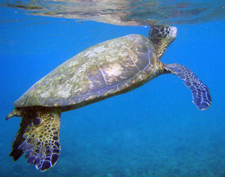 During this presentation participants will learn the basics about sea turtles and specifics about the different sea turtle species that inhabit our planet. We’ll learn about their incredible migrations and we’ll compare their sizes, life span, physical traits, habitat, nesting practices, food sources, behavior and special adaptations.
During this presentation participants will learn the basics about sea turtles and specifics about the different sea turtle species that inhabit our planet. We’ll learn about their incredible migrations and we’ll compare their sizes, life span, physical traits, habitat, nesting practices, food sources, behavior and special adaptations.
Participants will learn the differences between green sea turtles, loggerheads, Olive Ridley, hawksbill, kemps, and leatherback sea turtles.
Participants will learn about the causes of sea turtle population decline and ways in which they can help sea turtles survive.
During the presentation, a slide show will show beautiful photos of a variety of sea turtles that depict life in the ocean. Participants will learn about other sea life and how they interact with sea turtles. Participants will get to experience a sea turtle shell and other cool turtle biofacts, courtesy of Audubon Zoo. Finally I will provide participants with further reading, film and website recommendations.
Wonders of Primates
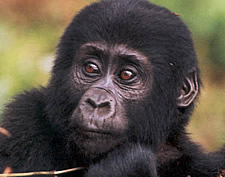 Wonders of Primates is an interactive presentation that allows children and adults to learn about the fascinating world of primates – which includes our human selves. We’ll look at amazing primate features that have allowed chimpanzees and monkeys to develop so uniquely. Participants will get to use their opposable thumbs and attempt to pick up things with their prehensile toes. We will fish for “termites” among other fun activities. I will have various skulls and pelts to demonstrate the great size differences in the many primate species that exist today – from the tiny squirrel monkey to the giant mountain gorilla. We’ll look at threats to primates and how we can help their survival.
Wonders of Primates is an interactive presentation that allows children and adults to learn about the fascinating world of primates – which includes our human selves. We’ll look at amazing primate features that have allowed chimpanzees and monkeys to develop so uniquely. Participants will get to use their opposable thumbs and attempt to pick up things with their prehensile toes. We will fish for “termites” among other fun activities. I will have various skulls and pelts to demonstrate the great size differences in the many primate species that exist today – from the tiny squirrel monkey to the giant mountain gorilla. We’ll look at threats to primates and how we can help their survival.
World of Wolves & Other Canids
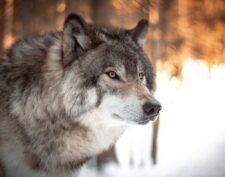 We’ll look at the fascinating world of wolves and why they strike fear into so many people. From the stories of our childhood (Little Red Riding Hood and Peter and the Wolf) we’ve been programmed to fear wolves. In this presentation we’ll look at why that is and how to better understand wolf behavior. We’ll learn about the dynamics of pack life and the adaptations wolves have undergone in order to survive. We’ll also look at our pet dogs and other canid species, such as foxes and coyotes, to compare behaviors. I will bring some pelts and skulls as well as tracks – to help participants identify different canid tracks. I also have a short 3 minute video that illustrates the importance of top predators in ecosystems to keep the balance. This video is about the introduction of wolves into Yellowstone National Park.
We’ll look at the fascinating world of wolves and why they strike fear into so many people. From the stories of our childhood (Little Red Riding Hood and Peter and the Wolf) we’ve been programmed to fear wolves. In this presentation we’ll look at why that is and how to better understand wolf behavior. We’ll learn about the dynamics of pack life and the adaptations wolves have undergone in order to survive. We’ll also look at our pet dogs and other canid species, such as foxes and coyotes, to compare behaviors. I will bring some pelts and skulls as well as tracks – to help participants identify different canid tracks. I also have a short 3 minute video that illustrates the importance of top predators in ecosystems to keep the balance. This video is about the introduction of wolves into Yellowstone National Park.
Native Louisiana – Animal Diversity & Habitats
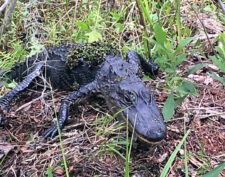 In this presentation, we will be looking at the native animals and unique eco-regions of Louisiana. From Cheniers and Deltas to Coastal plains and forests, we’ll look at the amazing animals species that live in our own backyard. From amazing birds (Roseate Spoonbills and Glossy ibises) to fascinating reptiles (rare Louisiana Pine Snake and the stunning Eastern five Lined Skink), we’ll learn about where these animals live and how they survive. I’ll have pelts and skulls and stories galore to demonstrate our unique heritage. Participants will get to try and identify various skulls and pelts. They will also learn about the many “invasive” species that have impacted our state such as the pesky nutria. Participants will learn about the 6 main eco-regions of Louisiana and where they need to go if they want to find a rare red-cockaded woodpecker or an even rare Golpher Tortoise. We are fortunate to live in such an environmentally diverse state. I’m also happy to coordinate field trips to nearby parks to explore, such as Bayou Sauvage or Couterie Forest in City Park.
In this presentation, we will be looking at the native animals and unique eco-regions of Louisiana. From Cheniers and Deltas to Coastal plains and forests, we’ll look at the amazing animals species that live in our own backyard. From amazing birds (Roseate Spoonbills and Glossy ibises) to fascinating reptiles (rare Louisiana Pine Snake and the stunning Eastern five Lined Skink), we’ll learn about where these animals live and how they survive. I’ll have pelts and skulls and stories galore to demonstrate our unique heritage. Participants will get to try and identify various skulls and pelts. They will also learn about the many “invasive” species that have impacted our state such as the pesky nutria. Participants will learn about the 6 main eco-regions of Louisiana and where they need to go if they want to find a rare red-cockaded woodpecker or an even rare Golpher Tortoise. We are fortunate to live in such an environmentally diverse state. I’m also happy to coordinate field trips to nearby parks to explore, such as Bayou Sauvage or Couterie Forest in City Park.
Animal & Plant Diversity of the Rainforest
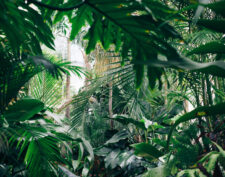 This presentation is about the wonders of the rainforest. We look at the diversity of plant and animal life. We also explore the different rainforests that are found throughout out planet. Students will get the opportunity to make rainsticks, if they ‘d like. We talk about the interconnectedness of the rainforest environment and how many species of plants and animals are dependent on one another for survival. We study the different elevational levels found within the rainforest (i.e. Canopy, forest floor, understory, etc.). We examine ways in which we can help protect the rainforest from right in our own backyard. We look at the role of logging, farming, pollution, medical research, human habitation, etc. in destroying the rainforest. We also come up with solutions to these problems.
This presentation is about the wonders of the rainforest. We look at the diversity of plant and animal life. We also explore the different rainforests that are found throughout out planet. Students will get the opportunity to make rainsticks, if they ‘d like. We talk about the interconnectedness of the rainforest environment and how many species of plants and animals are dependent on one another for survival. We study the different elevational levels found within the rainforest (i.e. Canopy, forest floor, understory, etc.). We examine ways in which we can help protect the rainforest from right in our own backyard. We look at the role of logging, farming, pollution, medical research, human habitation, etc. in destroying the rainforest. We also come up with solutions to these problems.
Scat & Tracks
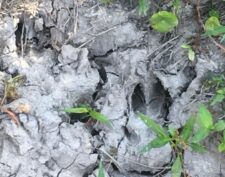 This is a fun and interactive presentation where participants will study and learn about different animals tracks and the signs they leave behind when passing through an area. We’ll look at canid vs feline tracks as well as different types of scat. Participants will get worksheets to take home to practice their newfound skills. This is another presentation that lends itself well to field trips, if desired. Even a walk around the schoolyard can be fascinating when you’re looking for signs of animal life.
This is a fun and interactive presentation where participants will study and learn about different animals tracks and the signs they leave behind when passing through an area. We’ll look at canid vs feline tracks as well as different types of scat. Participants will get worksheets to take home to practice their newfound skills. This is another presentation that lends itself well to field trips, if desired. Even a walk around the schoolyard can be fascinating when you’re looking for signs of animal life.
Animal Parenting
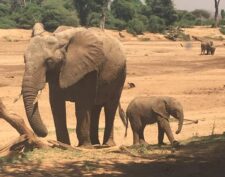 This presentation is geared to young audiences who may not be ready for the harsh realities of animal survival. Participants will learn about how different animal species care for their young. They will learn that some animals don’t really care for young – such as sea turtles who hatch from an egg on a beach and must make their way to the ocean. Other animals may care for their young for 2-3 years, such as polar bears. Alligators and crocodiles, despite hatching from eggs, stay with their moms for at least a year. Participants will play a matching game – attempting to match pictures of baby animals to their parents.
This presentation is geared to young audiences who may not be ready for the harsh realities of animal survival. Participants will learn about how different animal species care for their young. They will learn that some animals don’t really care for young – such as sea turtles who hatch from an egg on a beach and must make their way to the ocean. Other animals may care for their young for 2-3 years, such as polar bears. Alligators and crocodiles, despite hatching from eggs, stay with their moms for at least a year. Participants will play a matching game – attempting to match pictures of baby animals to their parents.
Wonder of Honeybees
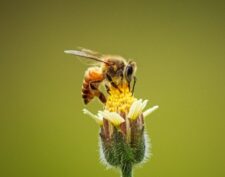 This presentation is usually conducted in a butterfly/bee garden or someplace outside where children can experience the movement of bees and butterflies. In this talk children will learn about honeybee behavior and communication. We will talk about the important role of pollination in the production of food crops. Students will learn about the “waggle dance” and will get to do their own “waggle dance” to show their classmates where food is. Students will also get to taste various honeys, such as cloverleaf, acacia, lavender and wildflower. Each honey has it’s own unique flavor as a result of the nectar where the bee had fed. We’ll talk about how to be safe around bees and other stinging insects. We’ll also learn about what kinds of plants attract honeybees and butterflies.
This presentation is usually conducted in a butterfly/bee garden or someplace outside where children can experience the movement of bees and butterflies. In this talk children will learn about honeybee behavior and communication. We will talk about the important role of pollination in the production of food crops. Students will learn about the “waggle dance” and will get to do their own “waggle dance” to show their classmates where food is. Students will also get to taste various honeys, such as cloverleaf, acacia, lavender and wildflower. Each honey has it’s own unique flavor as a result of the nectar where the bee had fed. We’ll talk about how to be safe around bees and other stinging insects. We’ll also learn about what kinds of plants attract honeybees and butterflies.
African Animals – Predator Vs. Prey Relationships & Adaptations for Survival
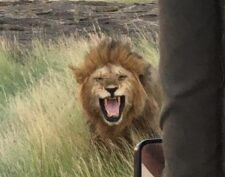 This is a talk I put together for a summer camp – in which children of all ages (3 and 4 yr olds to 15 yr olds) were to participate. As a result, the presentation is vastly different depending on the age of the children.
This is a talk I put together for a summer camp – in which children of all ages (3 and 4 yr olds to 15 yr olds) were to participate. As a result, the presentation is vastly different depending on the age of the children.
For 3-4 year olds: This presentation shows pictures of animals that live on the African savanna. We talk about migration and why certain animals move great distances. I have the children pretend to be different animals moving across savanna. Then I have a few of the children acting as predators (crocodiles, lions, leopards, etc.to take down the prey animals (impala, wildebeest, kudu, antelope, etc.). The children get to experience the trials of life on the savanna or during migration. I also bring in cool biofacts (wildebeest hide, leopard pelt, lion skull, elephant tusk, giraffe skull, elephant molar, etc) to help them imagine the size of these animals.
Elementary – Middle school Age (PK – 3rd grade): This presentation is similar to the preschool ages but without the “hunting” aspect. Participants learn about the behaviors and survival traits of a group of vastly different animals that all live in the same habitat – the savanna. Participants will get to study skulls and pelts and other biofacts. We will talk about diet and study the skulls to look at the different teeth that allow elephants to eat huge branches from trees and the sharp canines of predators that allow them to tear animal flesh so easily. We’ll look at adaptations that have evolved over many years to allow certain animals to survive a harsh environment. We’ll examine the role of migration and which animals undergo this risky move. We’ll look at physical traits and behavioral traits and how certain animals have adapted to living in close proximity to humans. We’ll also look at the role of habitat loss in impacting populations of animals.
Tooth Lab
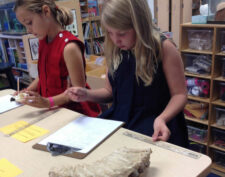 This is a fun and interactive presentation geared to students in 4th grade and older. I bring in a variety of skulls (omnivore, carnivore, herbivore and insectivore) for students to study. Each student will have the chance to examine their skull or biofact and will do a worksheet that will ask them to measure teeth, count teeth, study eye sockets, etc. Students will attempt to guess the animal from the skull in front of them. Students will rotate to 2 or 3 other skulls – to do the same thing. At the end of the rotations, we’ll go around and have students present their skulls to see if they were able to figure out which skull it was.
This is a fun and interactive presentation geared to students in 4th grade and older. I bring in a variety of skulls (omnivore, carnivore, herbivore and insectivore) for students to study. Each student will have the chance to examine their skull or biofact and will do a worksheet that will ask them to measure teeth, count teeth, study eye sockets, etc. Students will attempt to guess the animal from the skull in front of them. Students will rotate to 2 or 3 other skulls – to do the same thing. At the end of the rotations, we’ll go around and have students present their skulls to see if they were able to figure out which skull it was.
Wild Vs. Domestic Animals
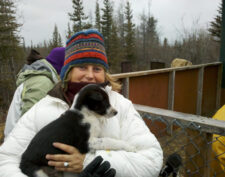 This is a talk I presented at the SPCA in Jefferson Parish for a friend who had organized a “Summer Camp” program. The talk is focused on the needs and care for domestic animals vs. wild animals. We talk a lot about the role of animal shelters in helping to find homes for domestic pets. This talk is also one in which I can bring a dog or rabbit- for fun and to get the kids excited. We look at what makes a good pet for someone. Some breeds/species of animals make better pets than others. We also focus on the care and expense of pets and why so many animals end up in shelters. I also talk briefly about wild animal rehabilitation. I bring in some skulls to compare – domestic dog and cat and a coyote and bobcat skull – to see differences between wild and domestic canids and felines.
This is a talk I presented at the SPCA in Jefferson Parish for a friend who had organized a “Summer Camp” program. The talk is focused on the needs and care for domestic animals vs. wild animals. We talk a lot about the role of animal shelters in helping to find homes for domestic pets. This talk is also one in which I can bring a dog or rabbit- for fun and to get the kids excited. We look at what makes a good pet for someone. Some breeds/species of animals make better pets than others. We also focus on the care and expense of pets and why so many animals end up in shelters. I also talk briefly about wild animal rehabilitation. I bring in some skulls to compare – domestic dog and cat and a coyote and bobcat skull – to see differences between wild and domestic canids and felines.
Tlingit & Sioux Indians:
Native Americans & Their Relationship with the Natural World
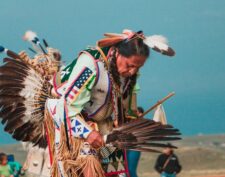 This is a talk I created for a 2nd grade teacher at St. George’s Episcopal school. This presentation introduced these two Native American cultures by looking at their home environment, their historical past and their present life. The Tlingit is a tribe of the Pacific northwest renowned for their stunning totems. They are a coastal community with strong ties to the ocean and marine life. We learned about their diet, housing, social structure, and the role nature plays in their everyday life. The Sioux are a plains people who live in the Midwest. We also learned about their diet, housing, social structure and role of nature in their lives. Although I do not have much in terms of biofacts for the Sioux or Tlingit, I do bring in some animals skulls and we talked about spirit animals that are present within both cultures. (Note, if interested, I have a lot of authentic Kachinas from the Navajo culture in which I could prepare a presentation.)
This is a talk I created for a 2nd grade teacher at St. George’s Episcopal school. This presentation introduced these two Native American cultures by looking at their home environment, their historical past and their present life. The Tlingit is a tribe of the Pacific northwest renowned for their stunning totems. They are a coastal community with strong ties to the ocean and marine life. We learned about their diet, housing, social structure, and the role nature plays in their everyday life. The Sioux are a plains people who live in the Midwest. We also learned about their diet, housing, social structure and role of nature in their lives. Although I do not have much in terms of biofacts for the Sioux or Tlingit, I do bring in some animals skulls and we talked about spirit animals that are present within both cultures. (Note, if interested, I have a lot of authentic Kachinas from the Navajo culture in which I could prepare a presentation.)
